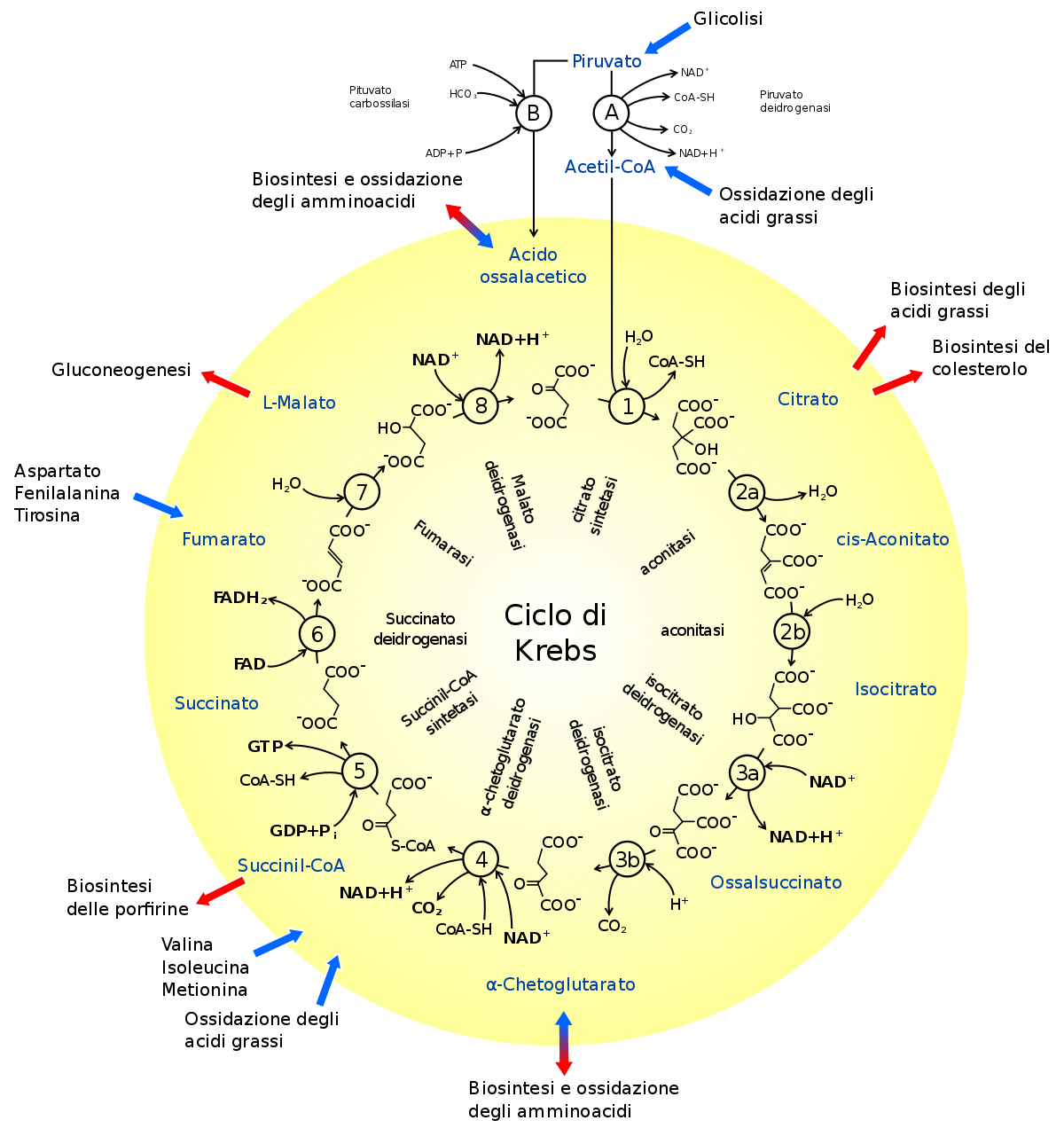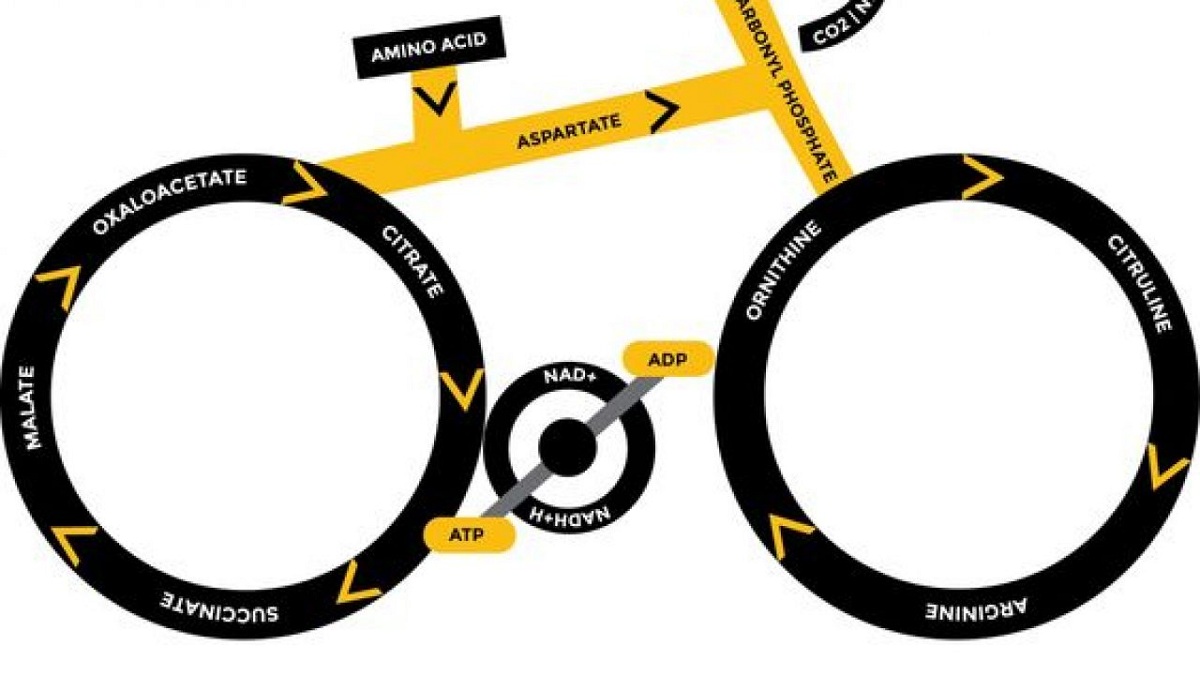
Surely you have had to study in biology one of the metabolic stages of aerobic cellular respiration that takes place in our body. Its about Krebs cycle. It is also known by the name of the citric acid cycle and it is a metabolic stage that occurs in the mitochondrial matrix of animal cells.
In this article we are going to tell you what the characteristics are and we are going to explain the Krebs cycle step by step and its importance.
Cellular respiration

Before beginning to explain what the Krebs cycle is, we must remember that cellular respiration consists of three phases. Let's see which each of the phases:
- Glycolysis- This is the process by which glucose is broken down into smaller parts. During this process pyruvate or pyruvic acid is formed which will lead to Acetyl-CoA.
- Krebs cycle: In the Krebs cycle, Acetyl-CoA is oxidized to CO2.
- Respiratory chain: here most of the energy is produced by the transfer of electrons from hydrogen. This energy arises from the elimination of the participating substances in all the previous steps.
What is the Krebs cycle
We know that it is a complex cycle and that it has several functions that help cell metabolism. Without this cycle, cells could not have or fulfill vital functions. The ultimate goal of the Krebs cycle is to promote the breakdown of the end products of the metabolism of carbohydrates, lipids and some amino acids. All these substances that are ingested into the body through food are converted into Acetyl-CoA with the release of CO2 and H2O and synthesis of ATP.
This is where the energy that cells must use to carry out their functions is generated. Among the various stages of the citric acid cycle we find various intermediates that are used as precursors in the biosynthesis of amino acids and other biomolecules. Through the Krebs cycle we obtain the energy from the molecules of organic food and are transferred to the molecules remains to export the energy for use in cellular activities. With this energy we can perform our vital functions and physical activities of our day to day.
In the Krebs cycle there are some mainly oxidative chemical reactions. All these reactions need oxygen to take place. Each chemical reaction has the participation of some enzymes found in the mitochondria. These enzymes are responsible for catalyzing the reactions. When we talk about catalyzing a reaction, we are referring to increasing its speed. There are numerous catalysts that help chemical reactions take place faster than normal.
Steps of the Krebs cycle

As we have mentioned before, in this cycle there are various chemical reactions that require oxygen to take place. The first reaction of all is the oxidative decarboxylation of pyruvate. In this reaction, the glucose obtained from the degradation of bald hydrates is converted into two molecules of pyruvic acid or pyruvate. Glucose is degraded through Glycolysis and becomes an important source of Acetyl-CoA. The oxidative decarboxylation of pyruvate begins with the citric acid cycle. This chemical reaction corresponds to the elimination of carbon dioxide and pyruvate that is generated in the acetyl group that binds to coenzyme A. In this chemical reaction, NADH is produced as an energy-carrying molecule.
With the formation of the Acetyl-CoA molecule, the Krebs cycle begins in the matrix of the mitochondria. The objective is to integrate a chain of cellular oxidation to oxidize the carbons and convert them into carbon dioxide. For all these chemical reactions you need the presence of oxygen. For this reason, the cellular respiration process is quite important.
The Krebs cycle begins with the enzyme citrate synthetase that serves to catalyze the chemical reaction of transfer of the Acetyl group to the oxaloacetic acid that forms citric acid and the release of coenzyme A. The name of the cycle is related to the formation of the acid citrus and all the chemical reactions that take place here.
Further oxidation and decarboxylation reactions occur in the following steps. These reactions cause ketoglutaric acid to form. During the process, carbon dioxide is released and NADH and H are formed. This ketoglutaric acid undergoes an oxidative decarboxylation reaction that is catalyzed with an enzyme complex of which Acetyl CoA and NAD are part. All of these reactions will lead to succinic acid, NADH, and a GTP molecule that subsequently it will transfer its energy to an ADP molecule producing ATP.
Just from the c the last steps we will see that the succinic acid will oxidize fumaric acid also known as fumarate. Its coenzyme is ADF. Here FADH2 is going to be formed, which is another energy-carrying molecule. Finally, fumaric acid is unpleasant to be able to form malic acid also known as malate. Finally in the Krebs cycle, the malic acid will oxidize to form oxaloacetic acid, they have restarted the cycle. Again all reactions will take place at the same moment and it starts again.
Importance
There are millions of arguments to know that the Krebs cycle is of vital importance for the formation of muscle mass and the proper functioning of the body. For this cycle to work correctly there are 5 basic nutrients that our body needs to function: thiamine, riboflavin, niacin, iron, and glutamine. These are amino acids that are used for the formation of new muscle tissue. Therefore, it is necessary to know how this cycle works in order to emphasize good nutrition in order to increase performance and muscle mass.
It is also useful to know the Krebs cycle to avoid numerous diseases due to energy or nutrient deficiencies in our body. As you can see, all these chemical reactions occur simultaneously in the body to ensure proper functioning.
I hope that with this information you can learn more about the Krebs cycle and its importance.
